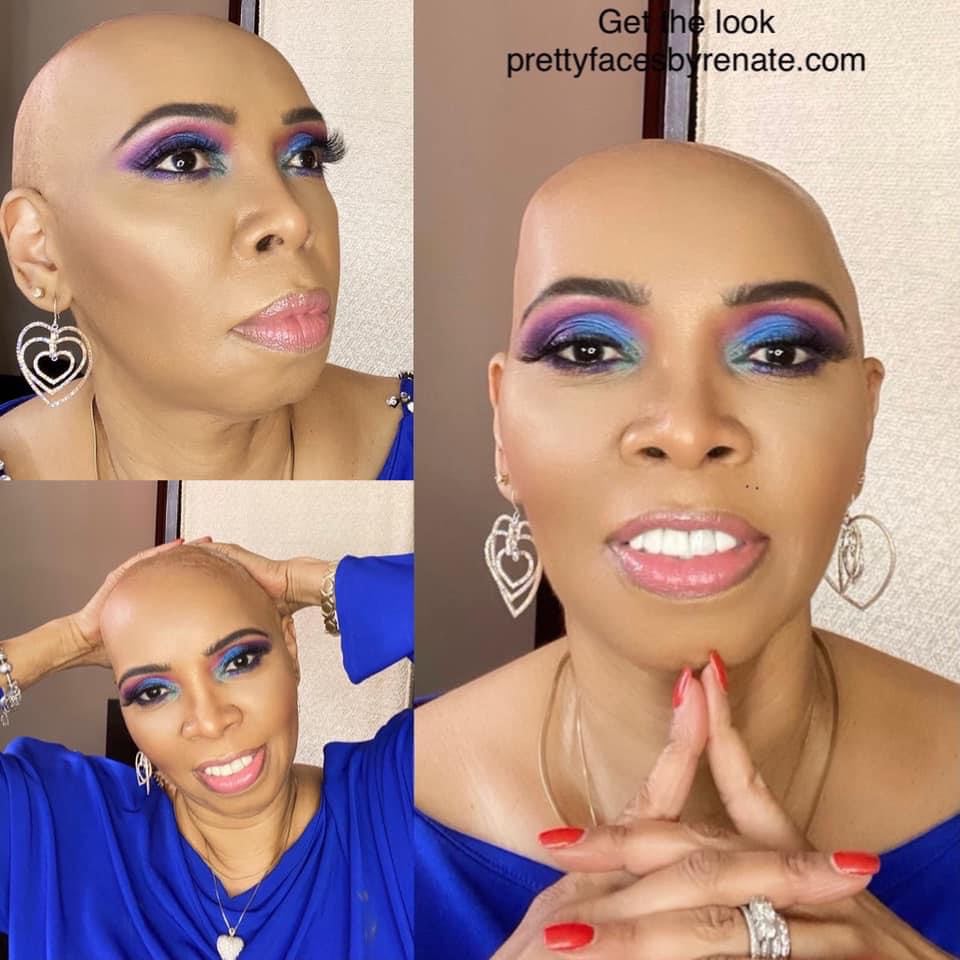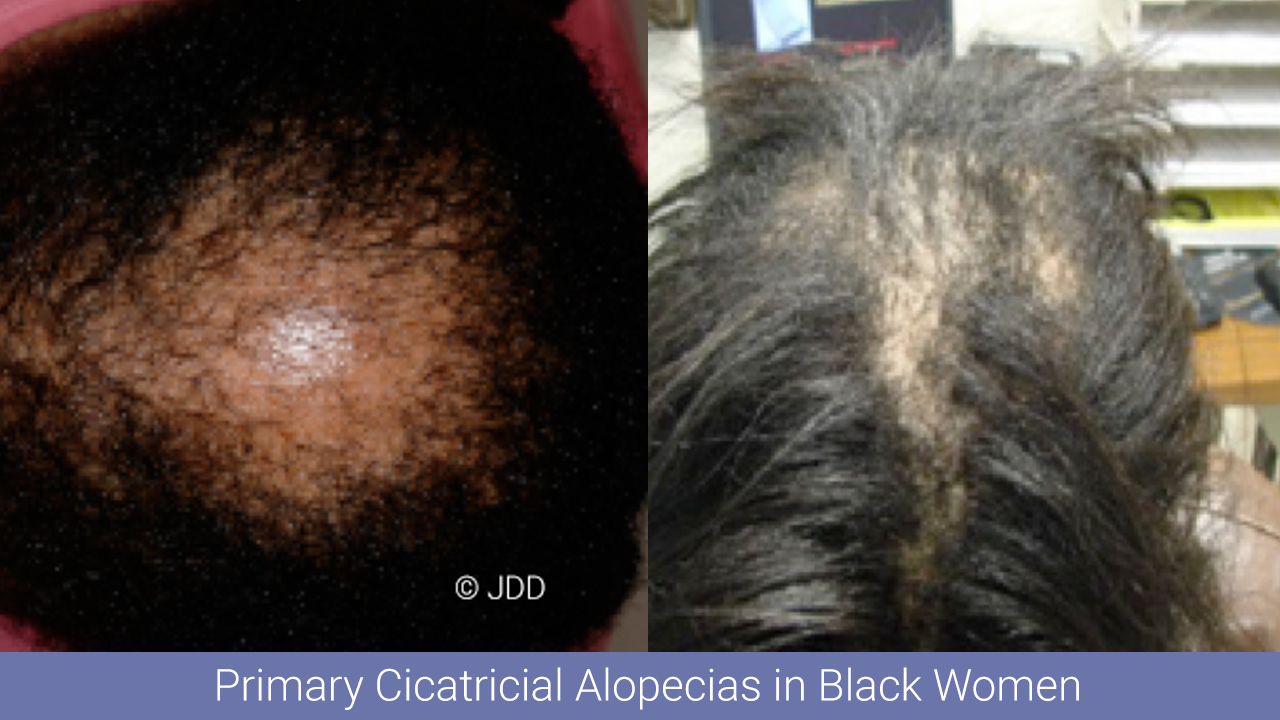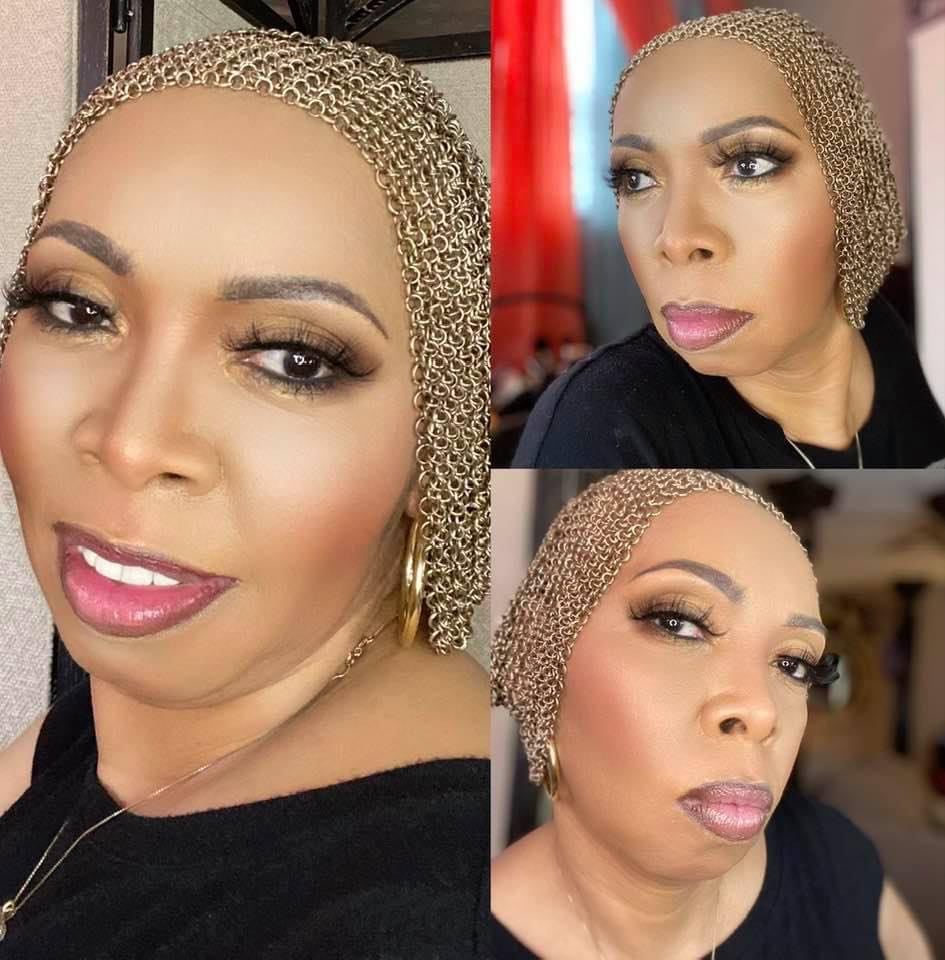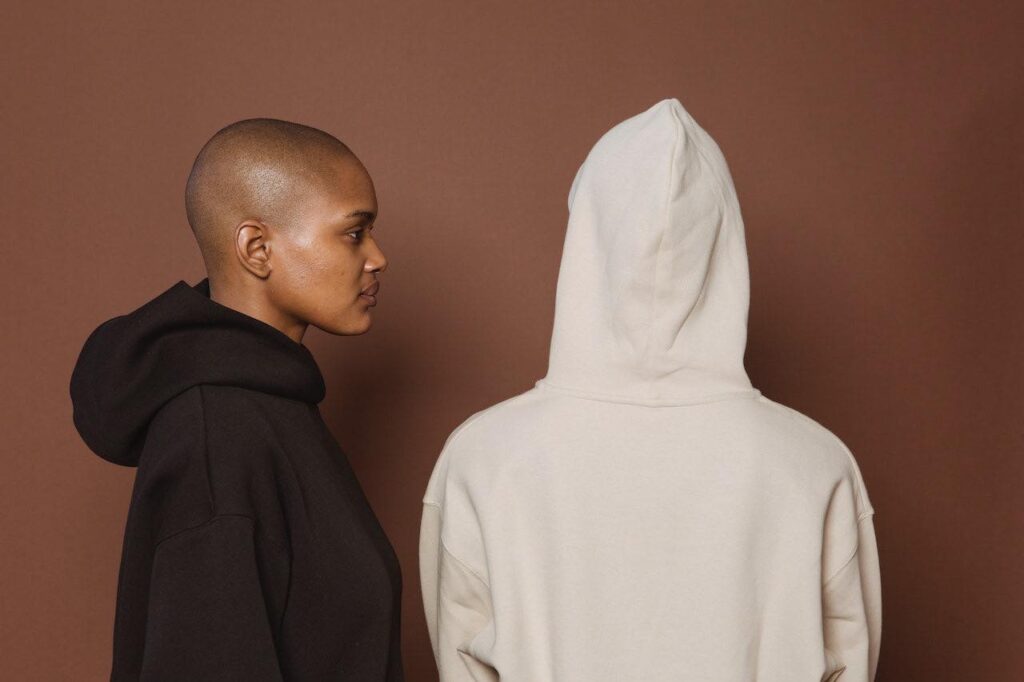Redefining Beauty: Overcoming Alopecia with Sheena Wallace – I Have Alopecia, But Alopecia Does Not Have Me.

Alopecia, a condition that causes hair loss, can have a profound impact on one’s self-esteem and confidence. But for Sheena Wallace, a woman living with alopecia, it has also been a catalyst for redefining beauty and reclaiming her identity.
Sheena Wallace is a strong and resilient woman who has been living with scarring alopecia, a condition that causes permanent hair loss due to scarring on the scalp. She first noticed the thinning of her hair when her cousin pointed it out to her, and she began to go natural in an attempt to preserve what hair she had left. Eventually, the hair loss progressed to the point where she made the decision to cut it all off and embrace her baldness.
The journey has not been easy for Sheena, as she has had to overcome societal beauty standards and the emotional toll of losing her hair. However, she has come to the realization that she has alopecia, but alopecia does not have her. She continues to live her life with confidence and grace, showing others that bald is beautiful and that beauty comes in all forms.
Sheena’s story is an inspiration to many who may be struggling with similar conditions or who may feel pressured to conform to society’s narrow beauty standards. Her strength and positivity remind us that true beauty comes from within, and that self-love and acceptance are essential in overcoming any challenge we may face.
What Is Scarring Alopecia?

Scarring Alopecia, also known as cicatricial alopecia, is a type of hair loss that occurs when inflammation damages and destroys hair follicles. Unlike other types of alopecia, scarring alopecia results in permanent hair loss, as the hair follicles are replaced with scar tissue. The condition can affect people of any age, gender, or ethnicity, and can occur anywhere on the scalp or body where hair grows. Scarring alopecia is a rare condition, and there is no known cure for it, but there are treatments available to help manage the symptoms and slow the progression of the disease.
Symptoms of scarring alopecia include redness, itching, burning, and pain in the affected area. The skin may become shiny and smooth, with visible scarring, and hair loss may occur in small patches or over a larger area. In advanced cases, scarring alopecia can result in complete baldness.
There are several different types of scarring alopecia, each with its own unique set of symptoms and causes. Some of the most common types of scarring alopecia include lichen planopilaris, frontal fibrosing alopecia, and central centrifugal cicatricial alopecia. Lichen planopilaris is a chronic inflammatory disorder that affects the hair follicles and can result in permanent hair loss, while frontal fibrosing alopecia primarily affects the hairline and eyebrow area. Central centrifugal cicatricial alopecia is most common in African American women and typically starts at the crown of the head, gradually spreading outward.
Treatment for scarring alopecia typically involves the use of topical or oral medications to reduce inflammation and slow the progression of the disease. In some cases, hair transplant surgery may be an option for those with advanced hair loss. Additionally, wigs or hairpieces may be used to help manage the cosmetic effects of the condition.
It is important to note that scarring alopecia can have a significant impact on a person’s self-esteem and mental health. It is essential to seek support from family, friends, or mental health professionals if necessary.
Now Let’s Dive Deeper Into Sheena’s Story

Sheena is an entrepreneur who specializes in cosmetic products for brows, lashes, and lips. She met Morale at a time when her hair was thinning, but she had not realized the extent of the problem. Sheena’s cousin was the first to notice the thinning at the crown of her head. Over time, Sheena’s hair continued to thin, and she noticed it getting wider and wider.
Sheena tried various hairstyles to hide her thinning hair, but eventually, she realized that she had alopecia. She decided to cut off all her hair and put her faith in God. She believed that her hair was her glory, but she still had her crown, and God had a purpose for taking her hair away.
At Morale’s suggestion, Sheena went to see a dermatologist who diagnosed her with alopecia. Sheena tried various treatments, including scalp injections, to restore her hair. Although she tried every treatment that came online and bought products from a vegan shop, Sheena refused to give up on finding a cure for alopecia.
Excerpt from the podcast “Redefining Beauty: Overcoming Alopecia with Sheena Wallace – I Have Alopecia, But Alopecia Does Not Have Me”
Morale Ocain: So Sheena, you mentioned getting injections for your hair loss. Can you tell us a little bit more about that? Did they hurt? How often did you get them?
Sheena: Yeah, I got the injections once a week for about six months, but unfortunately, I didn’t see any improvement at all.
Morale Ocain: That must have been really disappointing. Did the doctors run any blood tests to try and figure out if your hair loss was related to your hormones?
Sheena: Actually, they didn’t do any blood work, but I do have a thyroid issue. Although I wasn’t on medication for it when I first started experiencing hair loss in my early 30s.
Morale Ocain: So let’s talk about the emotional side of things. When you realized that cutting your hair off was the only option, how did that make you feel?
Sheena: It was really hard, to be honest. I had a big bald spot on the top of my head and my hair was everywhere. It was difficult to even comb it over. I felt sad and frustrated because I’m a married woman and my husband is bald, so it wasn’t easy for me to accept my hair loss. But I knew it had to be done.
Morale Ocain: And who was the first person you talked to about cutting your hair off?
Sheena: It was my husband. He saw how much I was struggling and he suggested that I should cut it off. It was a tough decision, but I had to detach myself from my hair. Even though it took a long time, it felt like it happened so quickly. Suddenly, I had no hair left. At first, I was really self-conscious about being bald in public and how people would react.
Morale Ocain: So who helped you with the actual cutting?
Sheena: My best friend, who is a barber and hairstylist, helped me through FaceTime. I bought some clippers and she talked me through it. I did it myself.
Morale Ocain: And what was your husband’s reaction when he saw you with your new haircut?
Sheena: He was at home when I did it and he saw me after it was done. He was really supportive and said, “Wow.” He left the room and when he came back, he just said that he loved it.
Morale Ocain: That’s great to hear. And how do you feel about being bald now?
Sheena: I’m comfortable with it now. I actually prefer to shave my head with a razor because the hair grows in really unevenly at the back. With scarring alopecia, the hair grows in other areas, but not on the crown. So I try to keep it as smooth as possible.
When faced with a difficult situation, it’s easy to feel overwhelmed and helpless. But listening to the conversation between Morale Ocain and Sheena, we can draw inspiration from Sheena’s courage and determination to face her hair loss head-on.
Sheena’s journey was not an easy one, and she had to make some tough decisions along the way. But what stands out the most is her unwavering resolve to take charge of her life and do what needed to be done. She refused to be a victim of her circumstances and instead chose to confront her hair loss with strength and grace.
In the face of adversity, it’s natural to feel scared and vulnerable. But as Sheena’s story shows us, it’s possible to find the inner strength to overcome our challenges. Sheena’s courage is a reminder that we can choose to see our struggles as opportunities for growth and transformation. We can take control of our lives and find a way to move forward, no matter how difficult the journey may be.
Furthermore, Sheena’s decision to involve her husband and best friend in the process shows the importance of having a support system in times of difficulty. They helped her through the tough moments and provided the encouragement she needed to keep going. It’s essential to surround ourselves with people who will uplift and inspire us, especially when we face challenges in life.
Sheena’s story is a testament to the power of resilience and self-determination. It shows us that we can find the courage to face our fears and overcome our obstacles if we are willing to take that first step. Sheena’s journey inspires us to find the strength within ourselves to take control of our lives, face our fears head-on, and emerge stronger and more resilient on the other side.
Sheena Wallace’s story is one that inspires hope, perseverance, and self-love. Battling alopecia, a medical condition that results in hair loss, is not an easy feat. It can take a toll on one’s emotional and mental health, leaving one feeling helpless and powerless. But Sheena’s story shows that with a strong mindset and the right attitude, one can overcome any challenge.

In a conversation with Morale Ocain, Sheena shared her journey of acceptance and self-love. When Morale asked Sheena how much she encourages other girls and women going through the same experience, Sheena confidently replied that she does so with her story. Her journey of accepting her condition and embracing her true self serves as a beacon of hope for others who may be struggling with hair loss.
But Sheena’s journey was not an easy one. She shared with Morale how difficult it was for her to accept her hair loss and how it took a toll on her emotional and mental health. She felt sad, frustrated, and even embarrassed because she was a married woman, and her husband was bald. But despite all these challenges, Sheena did not give up.
Instead, she chose to go through the pain to get through it. She knew that it was not always going to be hard, and with time, things would get better. And they did. Sheena came to a point where she realized that alopecia did not define her; she defined herself. She chose to take control of her situation and not let it control her.
Sheena’s story serves as an inspiration to all those who may be struggling with their self-image. She shows us that our beauty is not defined by our external appearance but by our internal character. It is about having the right mindset, a strong will, and the courage to embrace our true selves, flaws and all.
So, to that woman struggling and battling with hair loss, Sheena has some wise words. She advises that you have to go through it to get through it. It may be hard now, but it won’t always be hard. You will have to make up your mind and choose to accept yourself, flaws and all. And when you do, you’ll realize that alopecia does not have you; you have it. And with that realization comes a sense of freedom and liberation, a sense of self-love and acceptance that can transform your life.
In conclusion, Sheena’s story teaches us that beauty comes in all shapes, sizes, and forms. It is not defined by our external appearance but by the beauty of our souls. So, let us embrace our true selves, flaws and all, and inspire others to do the same. Because when we do, we create a world that is more accepting, loving, and beautiful, one where we can all thrive and flourish.

Comments
No comment yet.